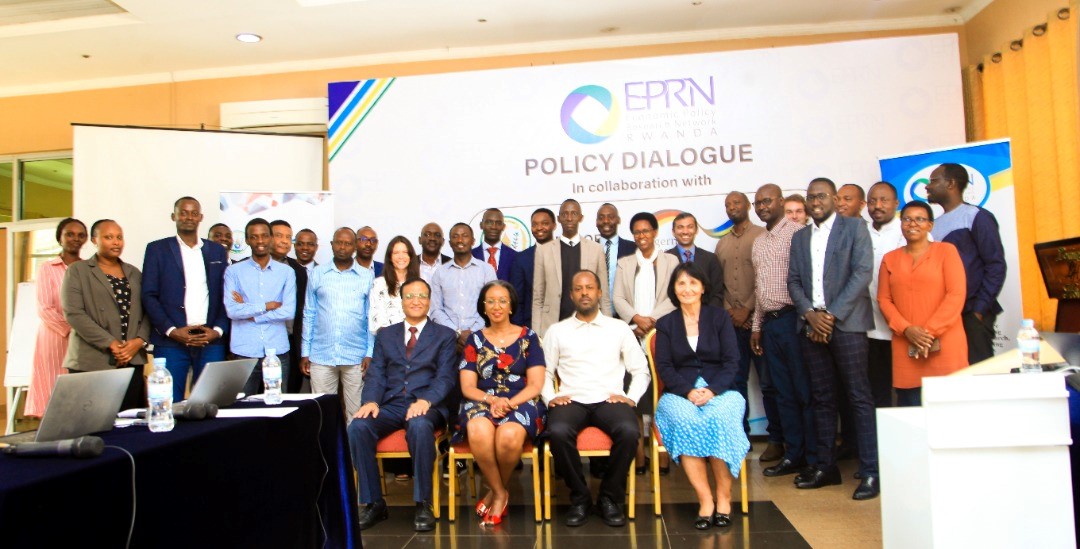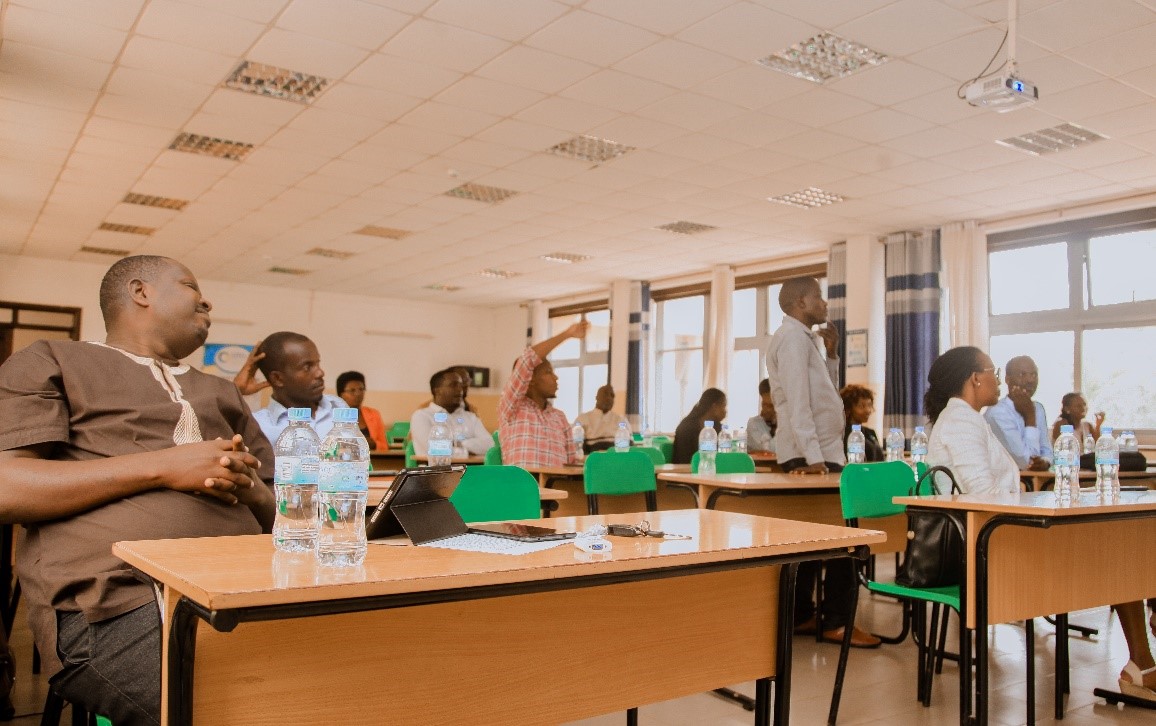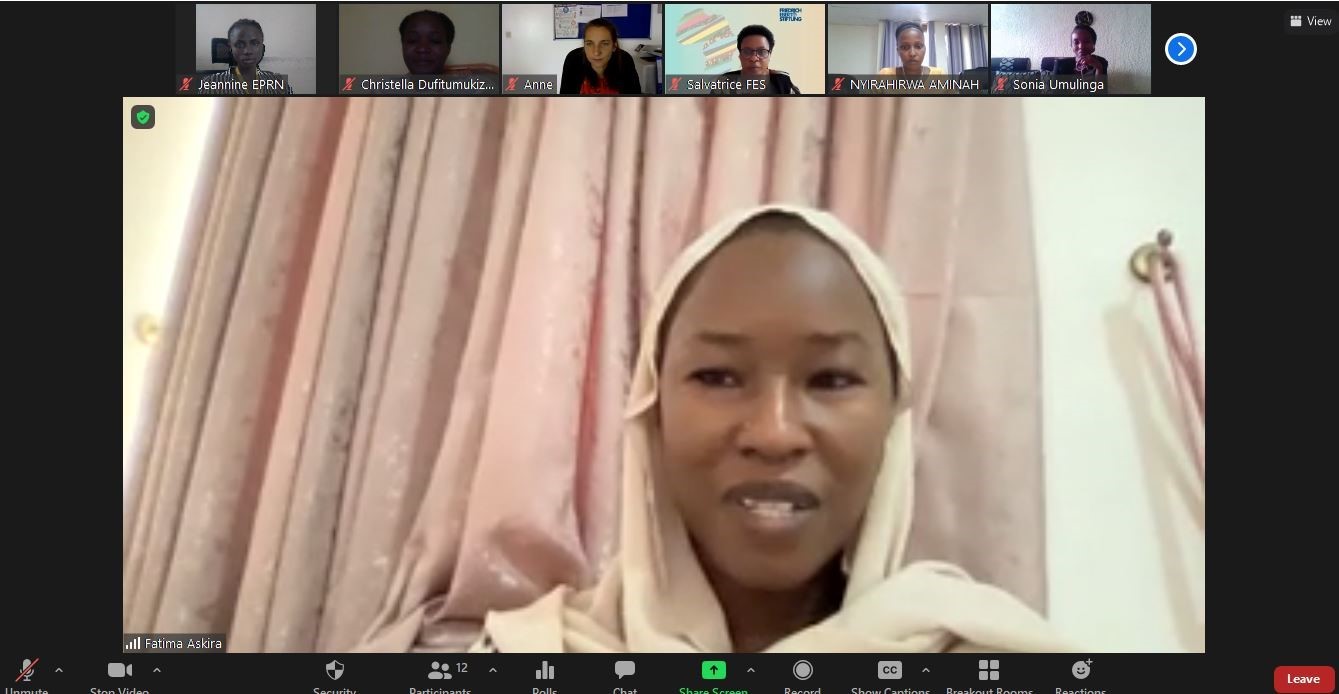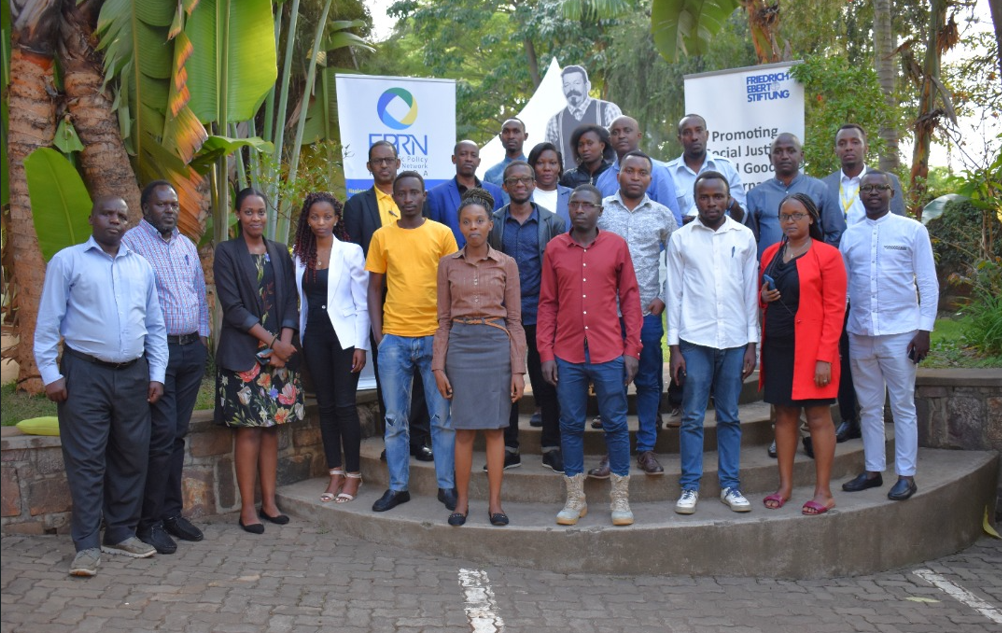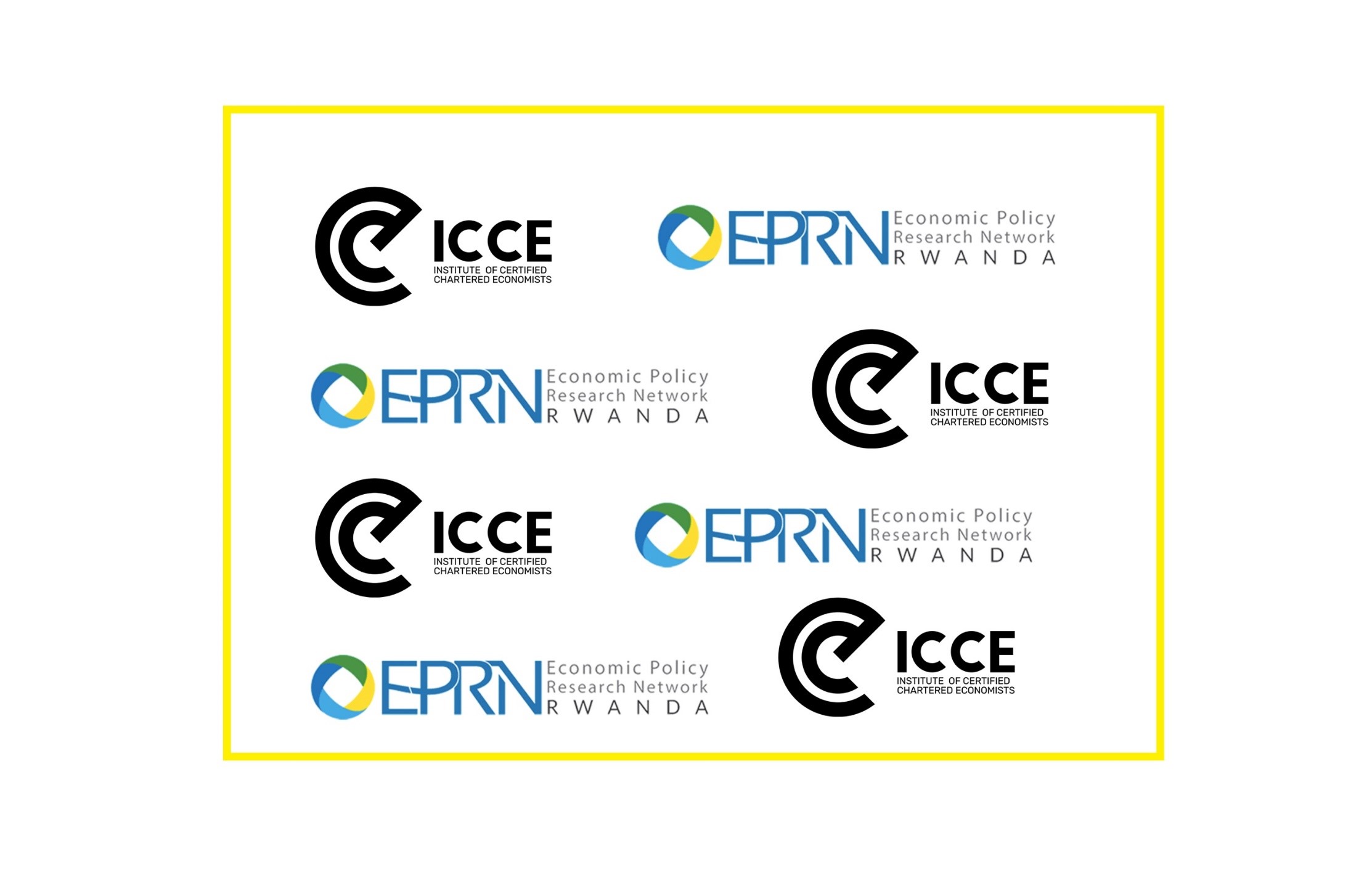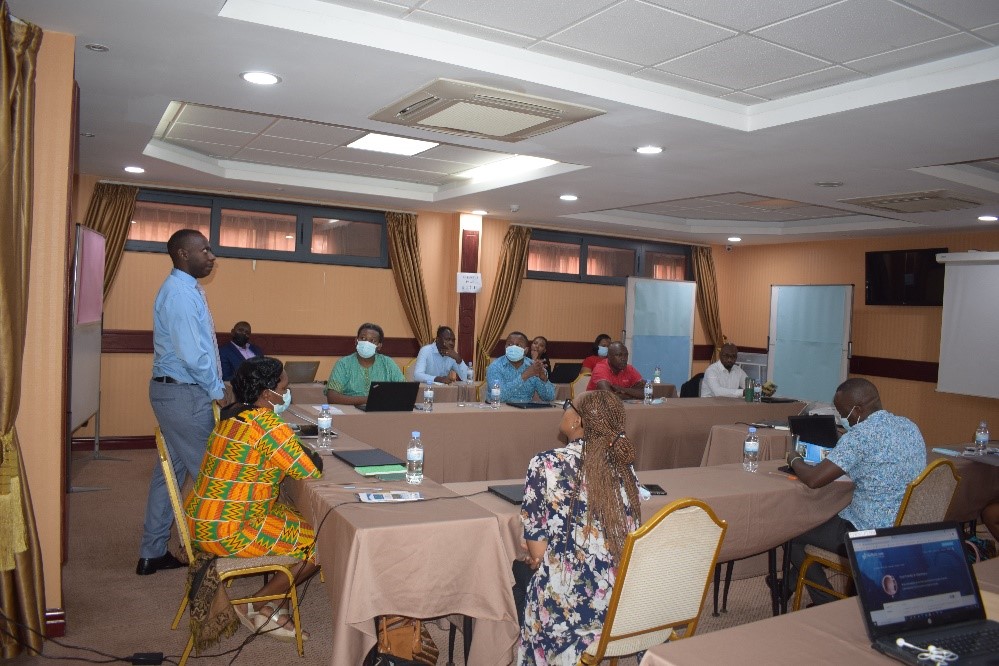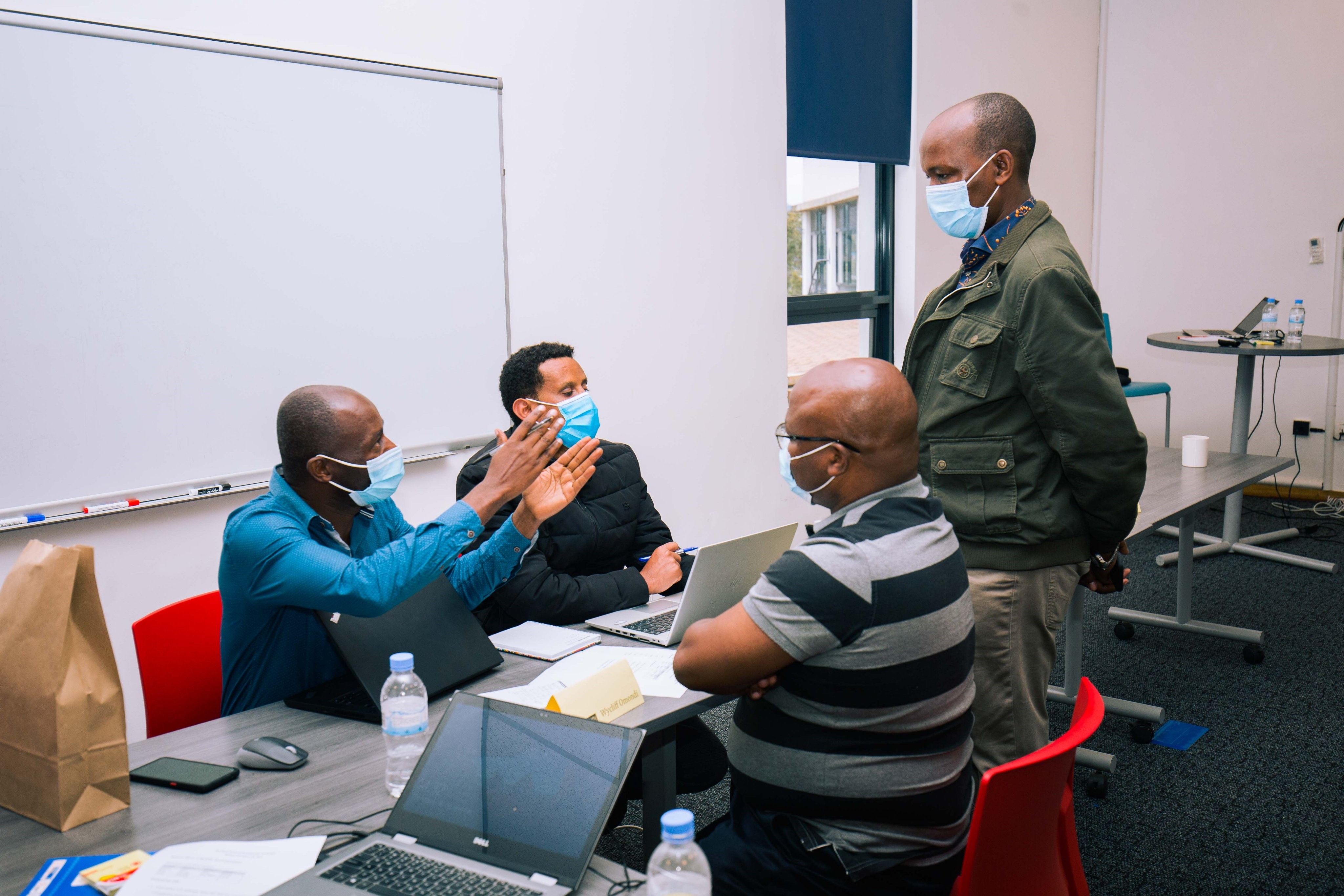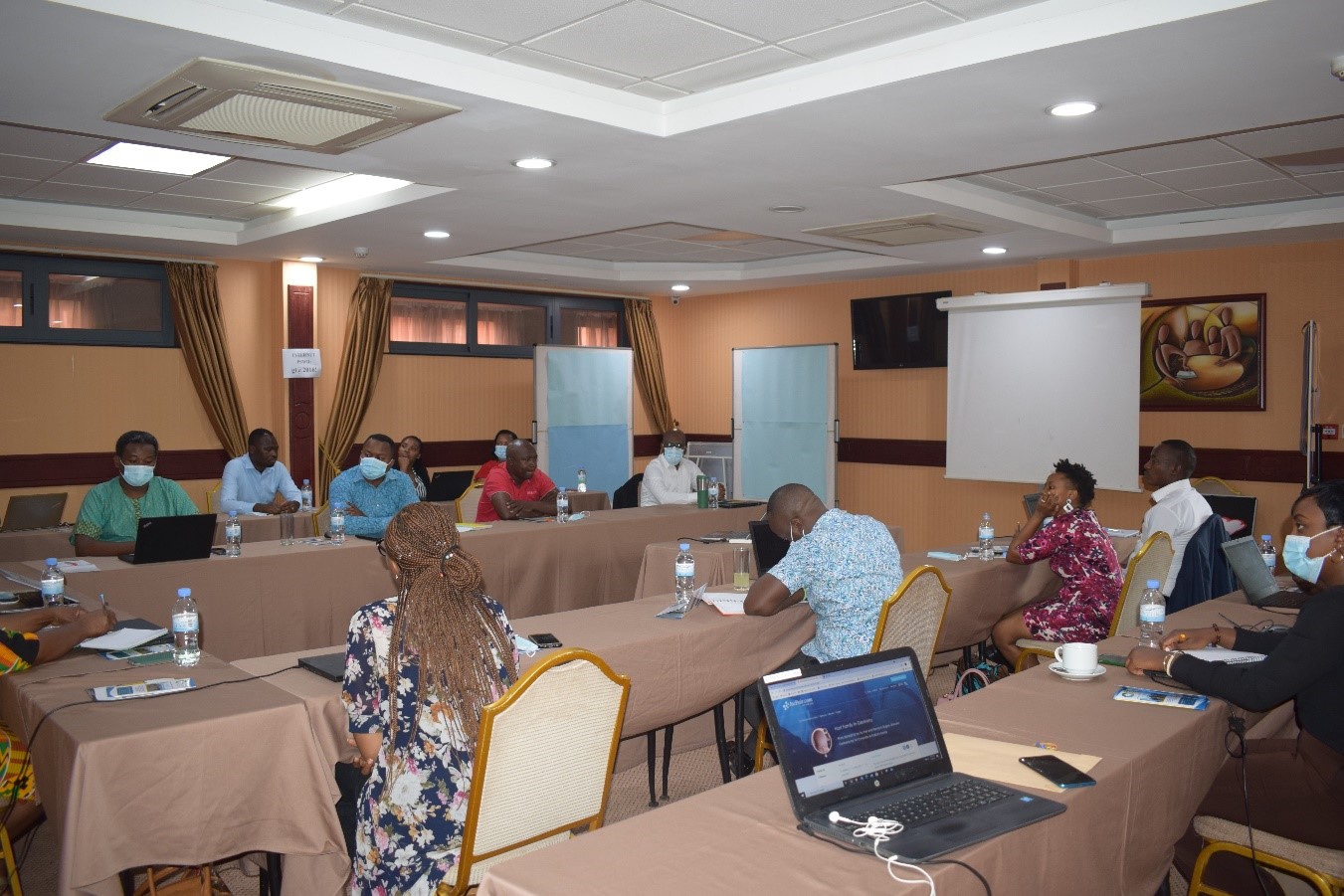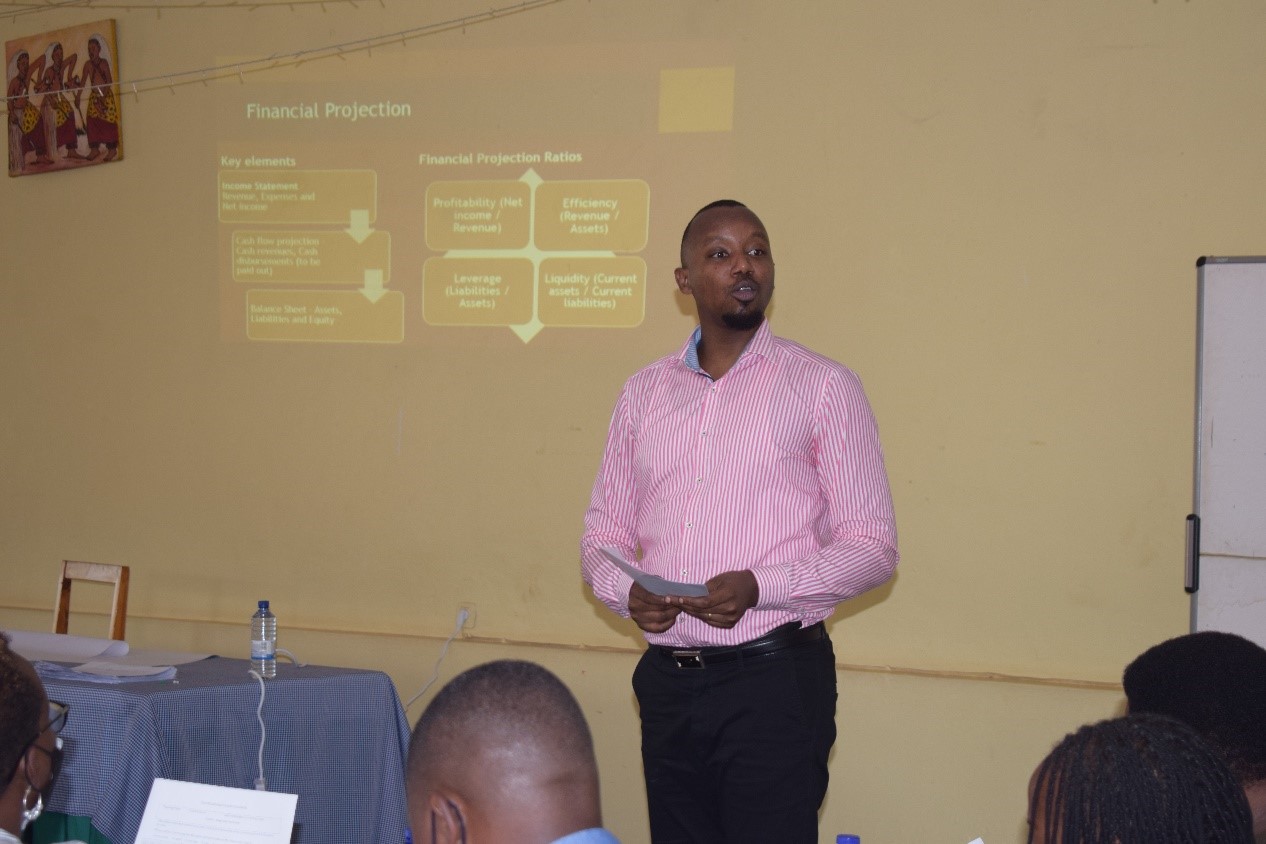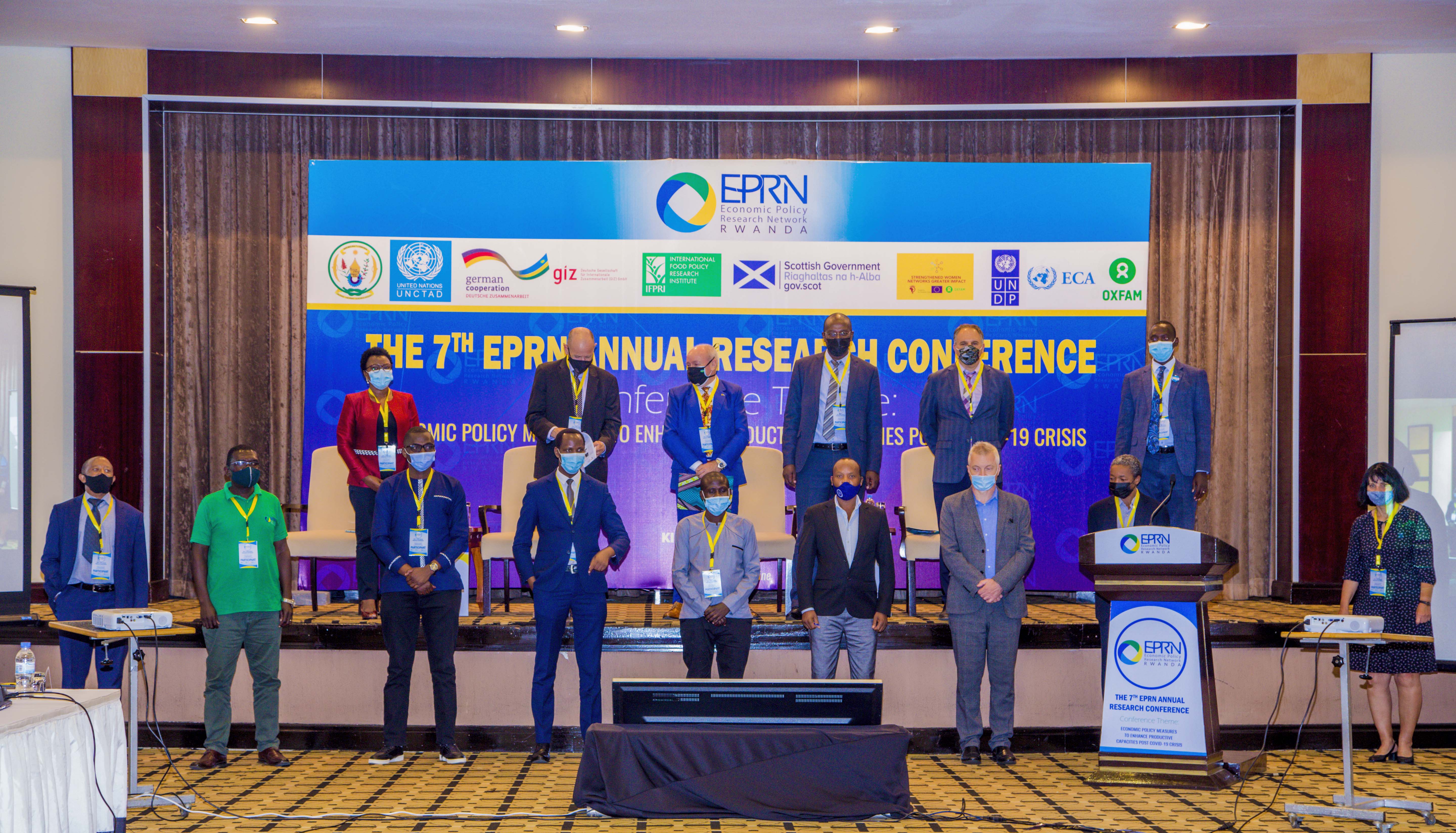6th EPRN Research Conference
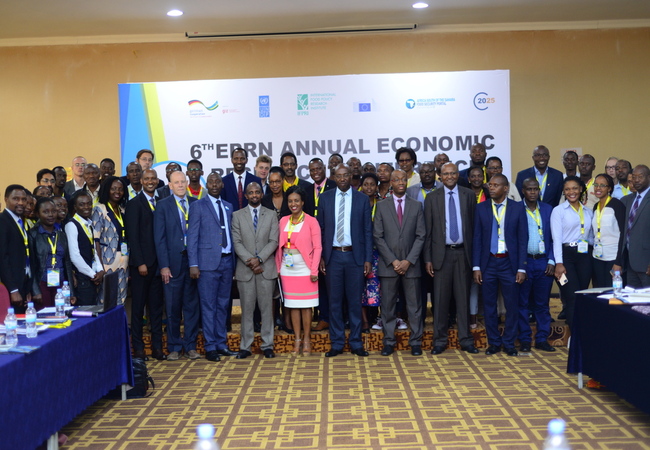
Jointly organized by : EPRN,GIZ, IFPRI, MINAGRI and Compact 2025
25th February 2020 @Lemigo Hotel Kigali- Rwanda
1. Background
On 25th February 2020, the Economic Policy Research Network organized the 6th Annual Economic Research Conference that brought together more than 200 researchers, policymakers, development partners, media, and CSOs to disseminate research findings from its scholars and those from other research and academic institutions.
The conference aimed at providing a research platform and exchange forum for economic researchers from a wide spectrum such as academics, government officials, representatives of development partners, CSOs around the topic of “Building Productive Capacities for Structural Economic Transformation”. The conference also presented a platform to brainstorm on Rwanda’s status concerning the topic of productive capacities and suggest innovative policy solutions to achieve desired goals and targets.
The main theme of the conference was broken into six sub-themes :
• Enhancing productivity and competitiveness (incl. value chain linkages)
• Improving access to markets (EAC, AfCFTA, other regional integration initiatives)
• Promoting Made in Rwanda (domestic and external market capturing strategies)
• Strengthening human capital for Structural Economic Transformation
• Improving Business Environment for Structural Economic Transformation
Five selected papers by EPRN members were presented and recommendations were drawn from presentations and brainstorming sessions. In addition to papers from members, there were also some reports shared by partner institutions like UNCTAD, UNECA, and TMEA. Presentations were followed by extensive Q&A sessions designed to engage not only high-level leaders in both research and policymaking, but also up-and-coming members of these communities, including mid-level policy analysts of EPRN network, students, and youth.
2. Welcome and Opening Remarks
Welcome remarks by the President of the EPRN Board of Directors, Dr Charles Ruranga
In his opening remarks, Dr. Charles welcomed all participants and thanked all partners in organizing this event. He emphasized the role of GIZ in supporting EPRN growth in general ; and expressed gratitude to the specific support from GIZ, UNECA, UNDP, and IFPRI in organizing this 6th conference.
Dr. Charles reminded the audience that EPRN considered the role of productive capacities in enhancing the overall economic growth of any country hence prompting EPRN to select a theme around productive capacities to assess potential gaps in our country and needed actions to uplift our development speed. He reminded that according to UNCTAD, no agreed-upon definition of maximum output exists. UNCTAD itself proposes : "the productive resources, entrepreneurial capabilities and production linkages which together determine the capacity of a country to produce goods and services." The term may also be applied to individual resources or assets ; for instance, the productive capacity of an area of farmland.
He, therefore, stated that to create a shared understanding of the factors affecting productive capacities in Rwanda as well as defining key recommendations to boost those capacities, EPRN and its partners organized this 6th conference.
Dr. Charles invited those who are yet to join EPRN to register and become active members. He reminded participants about the mission of EPRN which is to contribute to evidence-based economic policymaking by providing high-quality research, building capacity, and creating networking opportunities. He thereafter invited the Guest of honor to give opening remarks.
Opening remarks by Mr Opirah Robert, Director General Trade and Investment, MINICOM
In his opening remarks, Mr. Opirah Robert, Director General Trade and Investment under the Ministry of Trade and Industry started by congratulating EPRN for having successfully organized this conference. Mr. Opirah also thanked EPRN for having selected the topic around productive capacities, a topic of interest currently to Rwanda whereby the Country is much working with the United Nations Conference on Trade and Development (UNCTAD) to enhance the capacities across productive sectors. He stated her belief in the current collaboration between UNCTAD and The Ministry of Trade and Industry on the UNCTAD-Rwanda Programme, which is on the table for discussion and finalization will provide further opportunities for support and cooperation.
Mr. Robert thanked all participants from public and private institutions, academicians, EPRN members, development partners, and others ; and wished them to have fruitful deliberations. He declared the conference officially opened.
3. Presented Papers
Following a call for abstracts launched by EPRN early 2018, a big number of papers have been developed supported by assigned mentors and reviewers. Later on, the EPRN selection committee carefully chosen the best five papers to be presented during this conference :
a. A demographic, human capital DGE model for high-growth scenarios for Rwanda By Thierry Kalisa and Arend Kouwenaar
This paper examines the importance of human capital and public capital (productivity-enhancing infrastructure) for long-term growth. Improving access to education and health services is key to social protection schemes because human capital is a potentially large contributor to growth, along with enhancing human well-being in its own right. The paper uses a Demographic Dynamic General Equilibrium (D-DGE) model, combining demography, human capital, and a traditional DGE (Buffie et al, 2012) with several key features. First, the study draws on demographic models like DemDiv Rwanda (2017) to capture the impact of population growth on the labor force. Second, human capital projection modules link public spending on education and health to school years and health coverage ‘produced’, a feature of certain endogenous growth models. Thus, investment in human capital helps attain targets in education and health (like completion rates and doctors-population ratios) and improve productivity at the macro level. Third, the study draws on growth accounting by revisiting earlier studies for Rwanda for 2000-16. With more accurate rates of return to schooling and estimates of the return to public capital, it finds significant contributions to the growth of education, health, public capital, and land. Fourth, the DGE component sets out the public investment-human capital-growth-debt nexus allowing analysis of trade-offs between financing modes for public investment and between public and private investment via productivity effects and crowding in/out. Fifth, the model projects costs of policies, e.g., to meet SDGs in education and health and enhance public infrastructure. In its application to Rwanda, model scenarios explore the impact of policies affecting growth factors, to sustain high growth and reach high-income status by 2050. One realistic scenario for average GDP growth of 11% highlights the need for (i) significantly boosting human capital spending and continuing high public investment ; (ii) maintaining external concessional borrowing, as revenue increases and restraint on non-human capital current spending may be insufficient to fund the extra public spending ; and (iii) large boosts in private investment and foreign capital inflows, as domestic savings capacity improves fast (thanks to income gains and financial sector deepening) but from a very low base. The induced growth keeps public and private external debt below sustainability thresholds, such as 50% for NPV of public debt to GDP (50%, EAC convergence criterion). With gains in education and health and public infrastructure, human and public capital could contribute about 3½% points to the required growth, traditional growth factors private capital, labor, and land about 4% points, leaving a residual of 2½% points to come from growth in total factor productivity. Impact analyses around this high growth scenario illustrate the macroeconomic returns of policy choices.
b. Analysis of the causes of business failure in Rwanda : learning from small and medium enterprises (SMEs) By Daniel Twesige, Uzziel Hategekimana, Edie Jones Nkubito, Innocent Hitayezu
The Rwandan government has come up with different strategies to transform its economy since the year 2000, these include Vision 2020 in the year 2000 which was broken down into strategies (EDPRS1 and 2) and currently the National Strategy for Transformation (NST1). One of the key objectives of the NST 1is the improvement of the business sector to be able to contribute fully to the structural transformation of the economy. Despite implementing different strategies to enhance the private sector, studies show that the private sector and SMEs, in particular, are growing at a very low rate and 50% of the businesses that are started do not exceed 5 years of lifespan. The study analyzed the causes of business failure in Rwanda and to prescribe an ideal path for business sustainability in Rwanda. A combination approach composed of positivism and phenomenology coupled with a multi-method strategy was used by the researchers. Data was collected from different business organizations using questionnaires and documentation. Qualitative factors were analyzed using descriptive statistics and the chi-square method. The quantitative factors were analyzed using multivariate discriminant analysis. The findings revealed that business failure as a result of both qualitative and quantitative factors where quantitative factors contribute 85%. Based on the findings, the researchers concluded that business success or failure is a function of both qualitative and quantitative factors. Key identified factors are cash flow management, poor market research, lack of a business plan, expense management, revenue management, and tax compliance. The researchers recommend that there should be a program of mentorship to the young entrepreneurs, training of entrepreneurs in market research, business plan preparation, and tax compliance.
c. Analysis of recent evolution of economic sectoral output, employment and structural economic transformation in EAC : Spatial panel data approach (1991-2018)
By Fabrice NKURUNZIZA
This paper examines the effect of a variate of drivers of economic growth in East African Community (EAC) countries from 1991 to 2018. This paper is devoted to the recent evolution of the sectoral output level and employment in East African Community countries, assessment of causes and covariates that are correlated, and which might help us to predict output across countries and over time in EAC. The authors modeled sectoral output in EAC using the spatial panel approach. The authors have empirically illustrated the spatial Durbin model using the space-time data for output (GDP per capita), sectoral employment share, labor force, and final consumption expenditure over 28 years from 1991-2018. Based on a sample of 5 East African Community countries over 28 years, the paper revealed some interesting results. First, it was found that in 1991 the majority of EAC countries (Uganda, Burundi, and Tanzania) were characterized by both with higher people employed in agriculture -more than 75 percent of total employment- coupled with a higher share of agriculture sector in GDP-40 % to 50 %-. This has evolved and countries like Rwanda, Tanzania, and Uganda in 2018, have seen their share of added-value of agriculture in GDP declining to less than 30 percent, and people employed by the agriculture sector declining to less than 70%. Nevertheless, the agricultural sector continues to employ most of the labor force in East African community countries. Another key finding is that a country’s economic growth is affected by the performance of its neighbors, where the results suggested the spill over effects from employment in service as a percent of total employment and the final consumption expenditure.
d. The effect of short term bank loan financing on financial performance of manufacturing Small and Medium Enterprises (SMEs) in Rwanda By : Vedaste Byombi Kamasa and Charles Ruranga
Short term loan financing is one of the ways used to fasten financial performance and growth of firms mainly those operations in the manufacturing domain. Short term loan financing is a form of terms of overdraft facilities, line of credit. It is an important source of finance to SMEs all over the world where it has financed almost half of the businesses done by SMEs in the United States of America (USA), many businesses are financed by short term loan European countries, Africa and Asia. Record from the African Development Bank shows that short-term loan is the second source of finance to SMEs after own equity in Rwanda. Despite its importance all over the world, short-term loan financing in terms of line of credit and overdraft facilities has not been given much attention in different pieces of literature all over the world and mainly in the Rwandan context. Being a great source of finance to SMEs, there is no clear indication about the level at which it contributes to the financial performance and growth of SMEs. At the policy level, there are not many rules, laws, regulations, and guidelines about short term loan financing in Rwanda. Based on a population of 382 manufacturing SMEs operating in Kigali, a sample of 196 SMEs was drawn using a Slovin’s formula (n=N/1+Ne2). This study was conducted using self-administered questionnaires to collect primary data from SME holders. Both descriptive and inferential statistics using SPSS, multiple regression analyses were used to analyses the data. The study is deeply guided by the line of credit, overdraft facilities, and domains of operation and position. Findings revealed that there is a significant and positive relationship between short term loan financing in terms of line of credit finance, overdraft financing facilities, the domain of operation and position of the respondents, and financial performance of manufacturing SMEs in terms of return on sales and net profit. In summary short term, loan financing is a powerful tool to finance manufacturing firms and it must inform policymakers in Rwanda to think about ways of empowering SMEs owners with financial literacy.
e. Effect of EAC single customs territory on trade facilitation in Rwanda By Jean Paul MPAKANIYE
East African Community (EAC) is an organization of east African countries composed of 6 countries including Tanzania, Kenya, Uganda, Burundi, Rwanda, and South Sudan. Single customs territory (SCT) was adopted as the stage towards full attainment of the customs union achievable by the removal of restrictive regulations of internal border controls on goods moving between the member states with an ultimate realization of the free circulation of goods. This study intends to analyze the effect of EAC single customs territory on trade facilitation in Rwanda. The descriptive research design was adopted and both primary and secondary data were collected using documentation, interview, and questionnaire.372 cross-border traders were selected out of 5,313 traders who crossed the border. The major findings revealed that based on the regression results, R-square of 0.99 shows 99% of the variation in the traders facilitated through the change on the administration costs, business costs, declaration agencies, and repo rate. Therefore, there is also a significant relationship between EAC single customs and trade facilitation in Rwanda because the P-value of 0.016384 is less than the significance level of 5%. To further improve the cross border services and continue to facilitate the cross border traders, some recommendations have been proposed : governments should increase efforts on the policy of tax incentives on the investments for the traders who transfer the goods to Rwanda from EAC members.
In addition to the five papers by EPRN members, there were presentations of reports by partner institutions (IFPRI, UNECA, and TMEA).
Policy Recommendations
After deliberation, participants came up with the summarized policy recommendations :
i. The Government of Rwanda should keep improving access to education and health services as a key to social protection schemes because human capital is a potentially large contributor to growth, along with enhancing human well-being in its own right.
ii. For the AfCFTA Agreement to be implemented effectively, both the general public and private sectors should be fully aware of the implications of the AFCTA. This requires a campaign-type approach to raising popular awareness on the benefits arising from the AfCFTA.
iii. The private sector/entrepreneurs should be trained on how to prepare a business plan and carry out market research before any business decision.
iv. A network of young entrepreneurs with experienced entrepreneurs for the experience to entrepreneurs to mentor the young entrepreneurs should be sought of.
v. The government of Rwanda through the National bank of Rwanda (BNR), the Ministry of Trade and Industry (MINICOM), and the private sector Federation (PSF) should put measures to strengthen financial literacy among SMEs.
vi. Financial institutions have to put in place loan requirements, which are affordable to many people mainly young firms (business financial statement)
vii. EAC member states should seek ways to eliminate non-tariff barriers affecting trade within the EAC region
viii. The need for increased capacity building for business operators in regards to tools facilitating trade under SCT clearance
5. Conclusion and Closing Remarks
In his closing remarks, the EPRN Legal Representative congratulated EPRN researchers for informative papers developed and nice presentations made, he also tanked institution which supported the smooth organization of the conference. Dr. Charles also thanked all participants for the good discussions they had which resulted in policy recommendations.
He said, after this conference, researchers supported by their mentors and reviewers will continue working on the papers and incorporate potential comments from the conference. Then, final improved papers with key policy recommendations will be published online through the EPRN website : www.eprnrwanda.org, and through the EPRN Paper Series Vol 3. Policy recommendations will also be developed and disseminated to stakeholders (mainly policy-making institutions) for information and action.





